Since the first scenes of episode one, Netflix’s Stranger Things has paid homage to Dungeons & Dragons. They do everything from showing the kids with their minis and dice in the basement to naming villains after creatures straight out of the Monster Manual.
Volume 4 has brought that homage to new heights: not only did the kids play D&D, but they kind of looked cool doing it. (The introduction of fan favorite Eddie certainly helped.)
Even if they ran to their social media to complain about how the Hellfire Club wasn’t playing RAW for 1e, I doubt any fan of the game could disagree with what Eddie, the DM, says after that thrilling Nat 20: “This is why we play.”
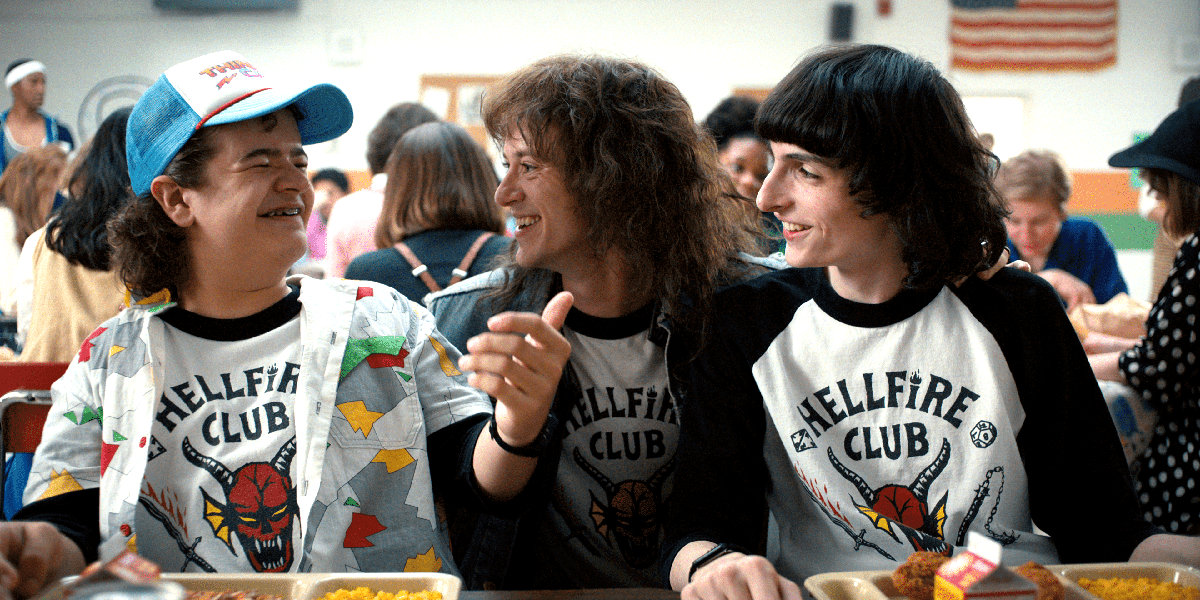
Other fans didn’t understand half the terms I just used but were intrigued by the concept of this game. If that applies to you, welcome!
In the interest of making my favorite pastime more welcoming (cough, getting more people to play with), I present a D&D crash course: how to get started without spending too much or getting overwhelmed.
The Basics
Dungeons & Dragons is unquestionably the most famous tabletop roleplaying game (TTRPG). While the Stranger Things crew would’ve been playing either the original game (first edition or 1e) or Advanced Dungeons and Dragons (2e), most newcomers to the game since 2014 are playing the fifth edition (5e).
This is good news! D&D 5e is more accessible and newbie-friendly than previous versions and there are tons of online resources to play.
D&D is designed to create fantasy worlds and stories—think Lord of the Rings for a traditional game. It’s pretty easy to use for any fantasy genre, though. I’ve played games with themes like horror, post-apocalypse, political intrigue and more.
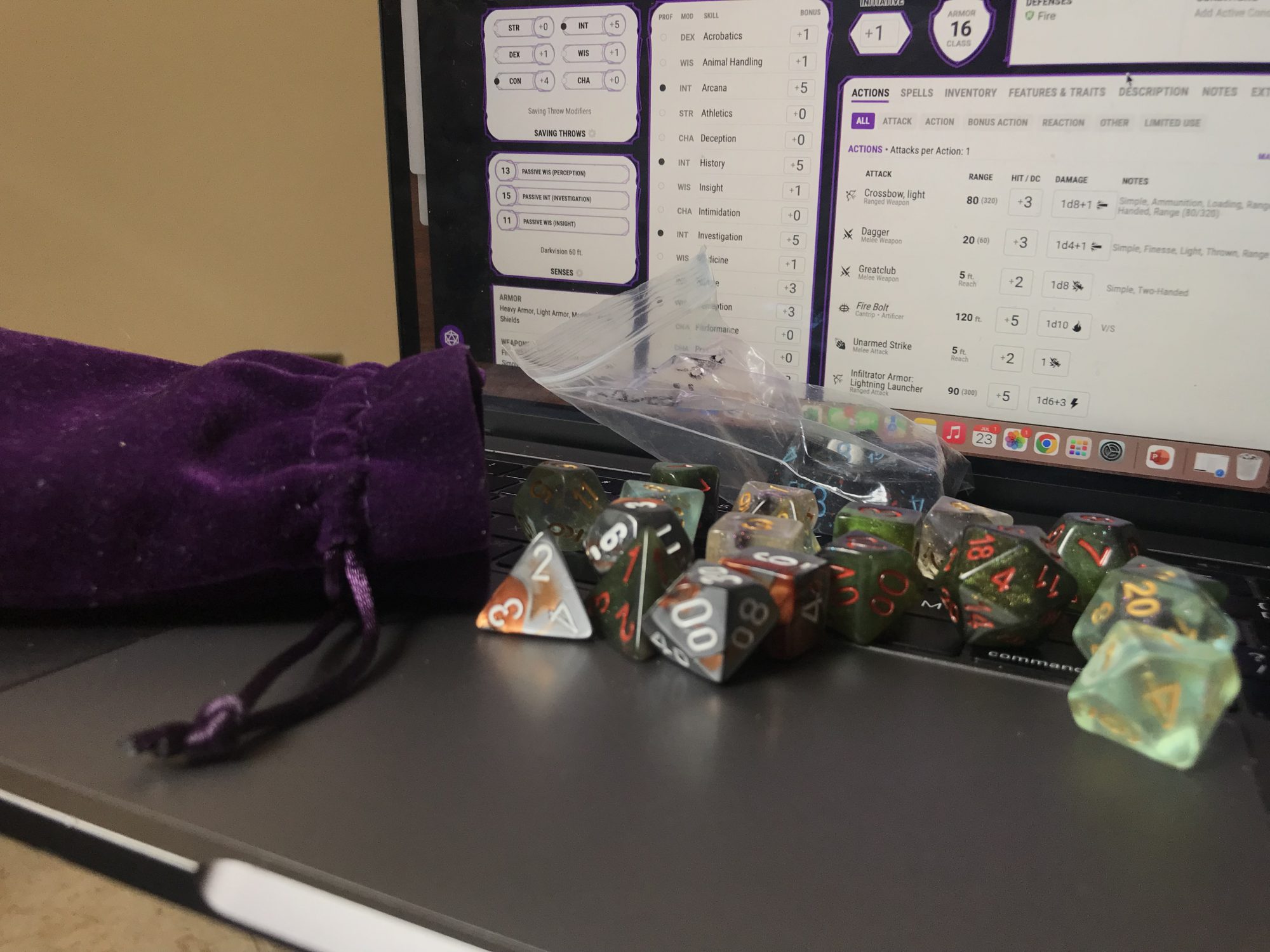
One player becomes the Dungeon Master (DM). Now holding this ominous title, the DM creates a setting for the story or gets familiar with a setting from one of the various pre-written adventures available.
The DM has the heaviest workload as they play any and all side characters, monsters and villains, keep the story rolling along, and make the final call on rule disagreements.
The rest of the group makes Player Characters (PCs). Their job is to play the protagonists. Typically they’ll solve some kind of mystery and defeat some bad guys, though the story can really be anything the group wants. We’ll get more into Player Characters in a moment.
Together, the DM and PCs work together to create a story by speaking and acting as their characters and resolving the consequences of each choice.
Some Notes
Before I jump into the more complicated stuff, I’d like to put my stamp of approval on online resources, especially DNDBeyond.
This site takes out all of the annoying math parts of setting up your D&D game. All you have to do is choose the options you want for your character and it spits out a character sheet you can use online or print out. There’s even a tutorial version to take you through the steps. Some players prefer to do the calculations by hand but, especially for new players, you’ll get to start playing much more quickly this way.
Everything you’ll need to start out is available for free and then you can purchase more player options and books as you want them.
If you are willing to spend a little money, check out Hunt for the Thessalhydra, a pre-written adventure based on the game Mike Wheeler was DMing for the group at the beginning of Stranger Things Volume One. Your players choices will still affect the story, but this may be the closest thing you can get to playing along with the characters.
[Editor’s Note: I do not recommend the Stranger Things themed D&D Starter Set. It’s awful. The standard 5e Starter Set, however, is one of the best RPG starter sets on the market]
The Dice
The final main component is the dice, which add an element of randomness to the story which can really make things exciting. A standard set—known as a “polyhedral set”—includes a D20, a D12, a D10, a D8, a D6 and a D4. A “D20” is a die with 20 sides. A “D10” is one with 10 sides, and so on.
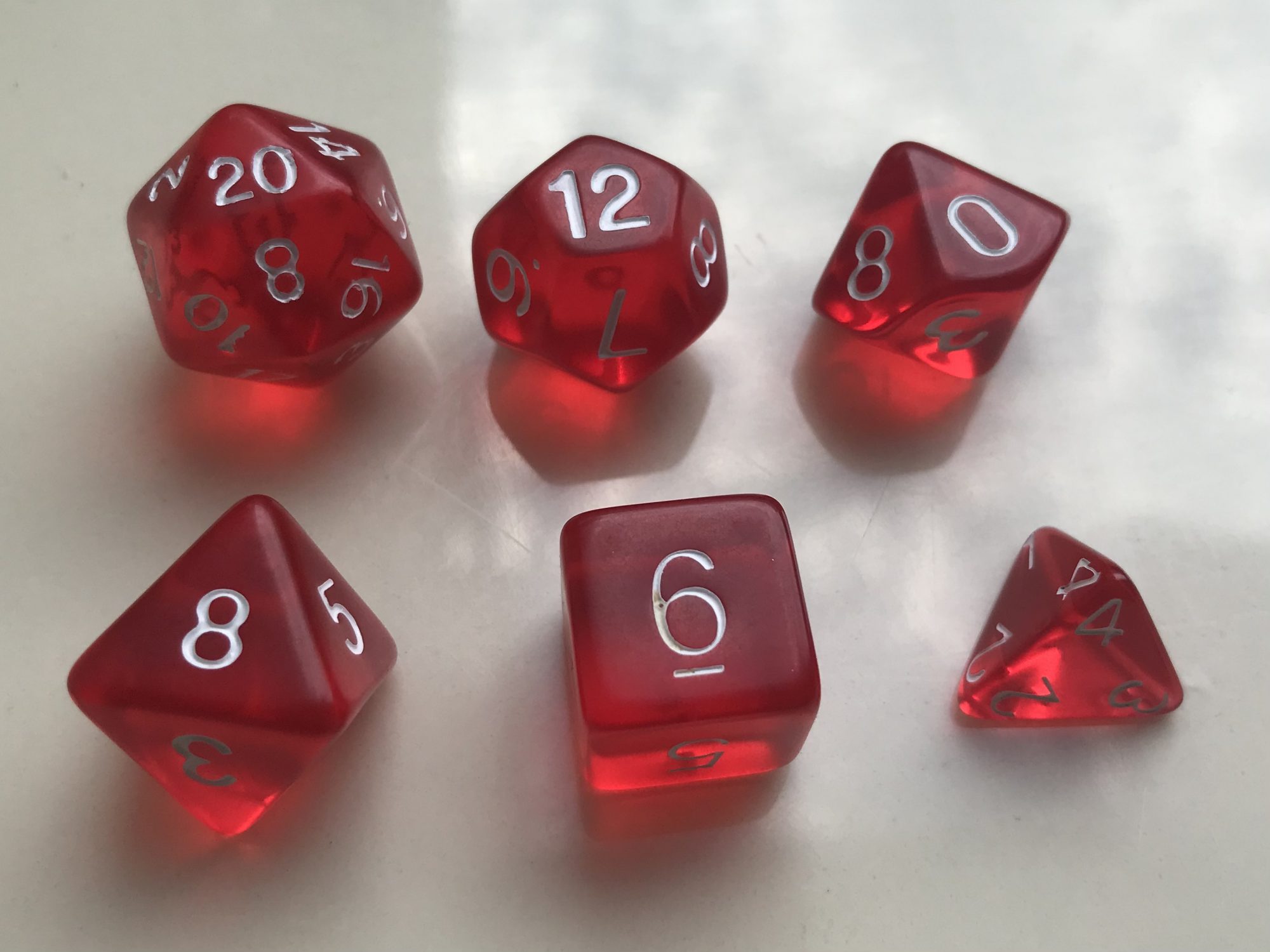
The D2 is used most frequently. It’s rolled to determine whether or not a character completes an action; for example, jumping over a ravine. If it’s a short distance, an eight or nine on the die might cut it. If it’s farther, a 15 could be the minimum to make the leap.
Each PC has bonuses to various abilities based on the character they’ve built. An especially strong character might have a +4 to athletics, meaning the player only needs to roll an 11 or higher to make that far jump. Part of the challenge is getting creative. A weaker character might try using a rope to lasso something on the other side for some help across. Another could use magic.
Most of the other dice besides the D20 are used to determine the extent to which something happens. How much damage was dealt in combat? How many enemies are affected by your spell?
Player Characters
Players can really be whoever they want due to all the possible combinations.
Each character has six main stats: strength, dexterity, constitution, intelligence, wisdom and charisma. Those stats determine their abilities in predictable ways: high strength makes them better at lifting things whereas wisdom tells them whether it’s actually a good idea to lift them.
They also matter in the following ways:
- Strength determines skill and damage with a lot of melee weapons.
- Dexterity determines Armor Class (AC), or how well you dodge things, as well as ranged weapon aptitude.
- Constitution determines how many Hit Points (HP) you have.
- Intelligence, wisdom and charisma are useful for any character, but also determine magical abilities depending on which kind of magic user (caster) you’re playing.
D&D features tons of playable races, from standard fantasy fare like humans, elves, dwarves and orcs to more niche creatures like the heaven-sent aasimar, the birdlike aarakocra and kenku, or the elemental genasi. In the interest of brevity, I’ll just say that each race has a handful of unique abilities and traits.
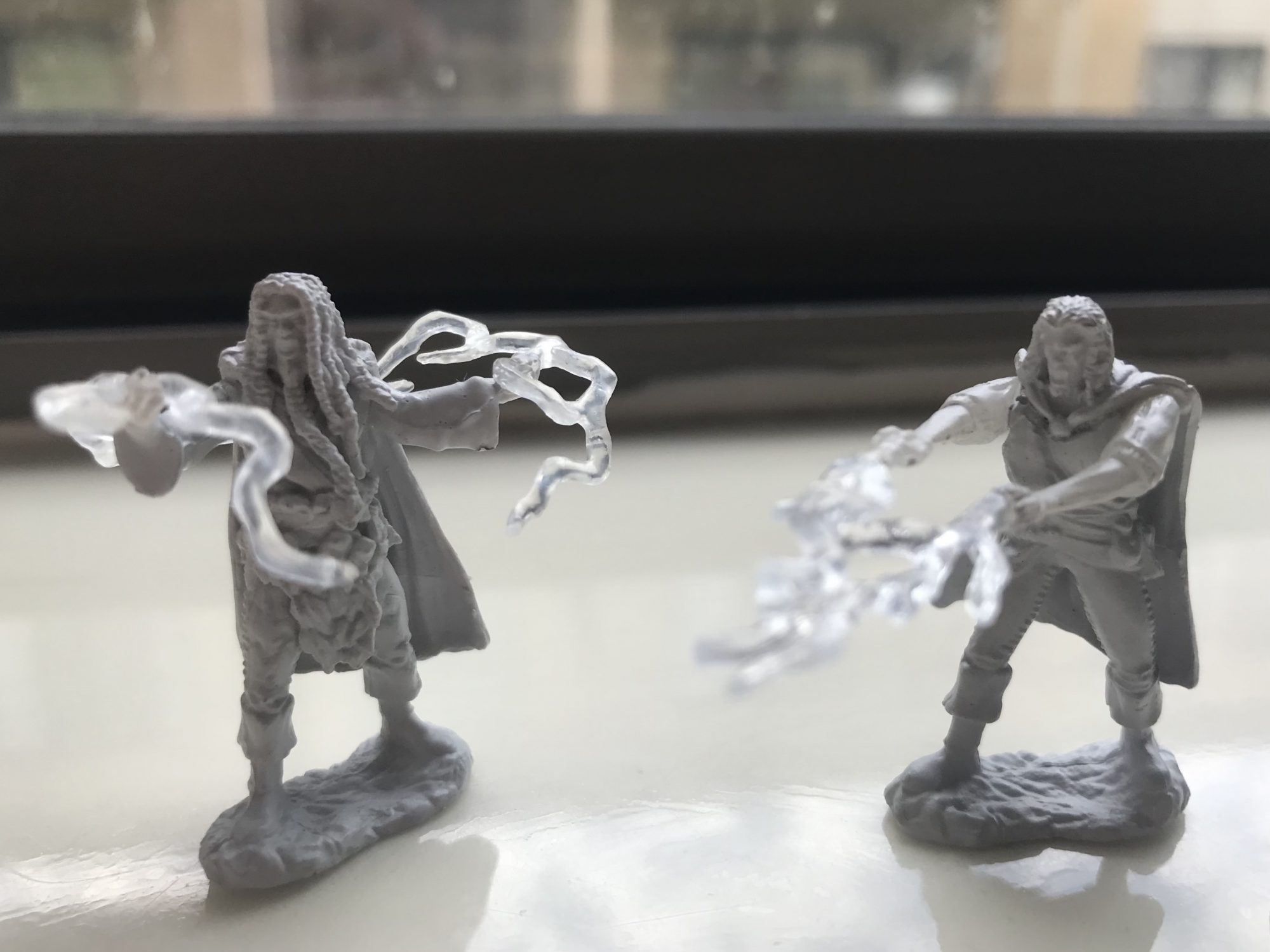
There are fewer player classes—13 to be exact—though each includes plenty of subclasses to add further customization. They can roughly be sorted between casters and martial classes, but some are more like half-casters, and some martial subclasses give you spells, and some casters aren’t half bad at regular combat…. Nearly any fantasy character you can think of can roughly be labeled by one of the classes.
Some people choose race and class based on making the most powerful character, but many just choose what they think is most fun or cool. Think of it this way: your race is what you are, while your class is what you do. Any combination you find entertaining, combined with whatever backstory you create, makes a totally unique character.
And Now… Go!
The best way to learn D&D is to just jump in and start playing. I recommend trying to get one or two experienced players at the table to teach everyone else and get them comfortable, but that isn’t necessary if everyone has some patience and time to learn basic rules.
You can also check out actual plays, streams and videos of “professionals” playing D&D together. Critical Role is the most famous, but other groups like Dimension 20, Dungeons & Daddies, Unprepared Casters and others are making their names known. Watching these groups can be really helpful to understand how the game flows, but always remember that those people are getting paid and committing huge amounts of time to the game- don’t worry if your game doesn’t feel as dramatic or complex.
Combat is the most rules-heavy part of the game and would probably require another article to really break down. It may be worth watching some actual play content just of that!
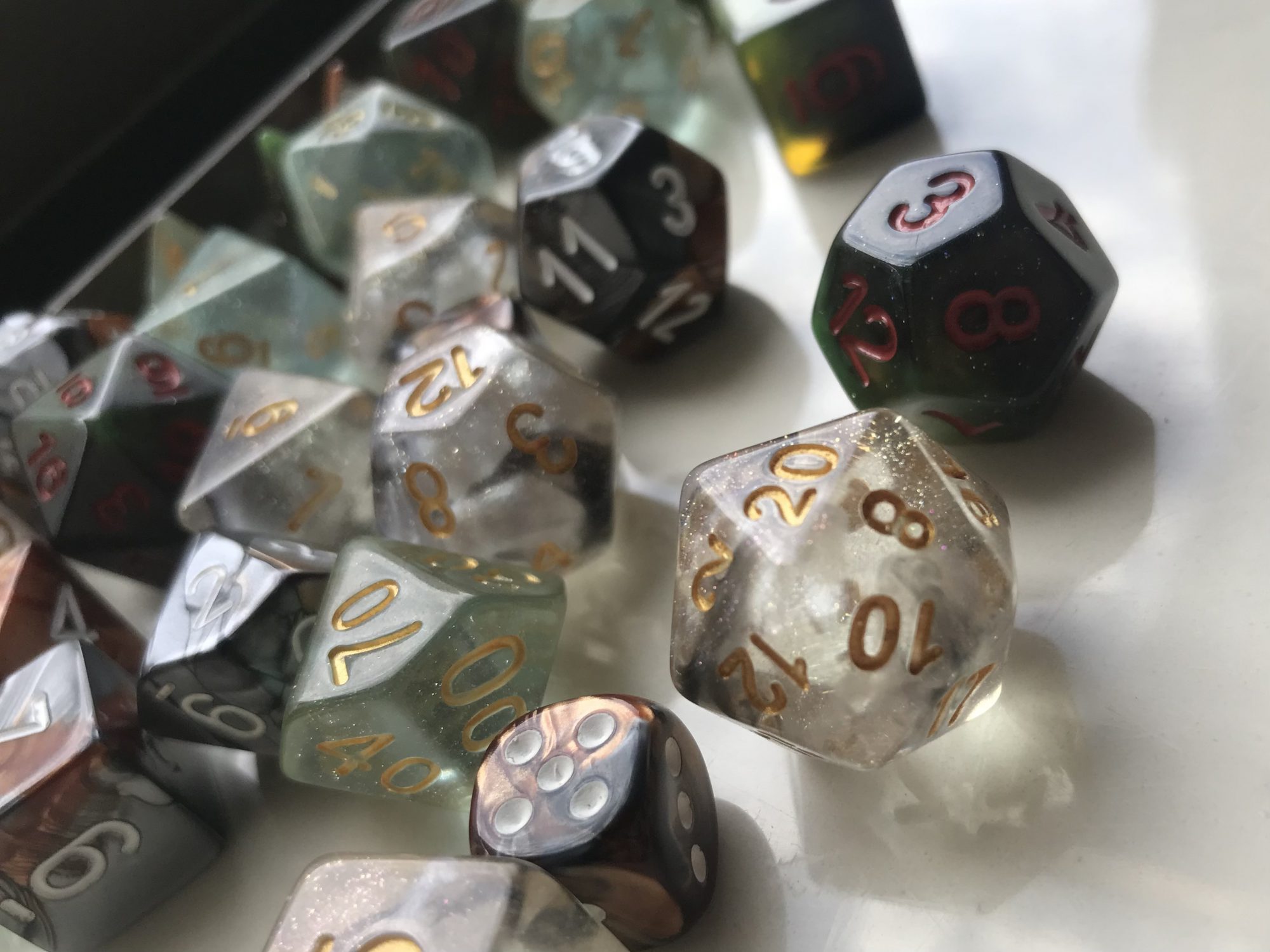
If you’re struggling to find people to play with, don’t be afraid to join online communities! Many people have started playing online over Zoom or Discord and most groups are very welcoming to new players.
Overall, don’t get too hung up on learning the rules right away; there are just too many. That will come with time. Likewise, roleplaying and acting as your character can be difficult at first. Improv is a genuine skill which takes time to learn.
Roleplay games can create incredibly rich and complex stories with so many players’ input without the limitations of traditional storytelling media. Focus on telling your story and having a good time with your group!
Good luck!


